Trending
Ranking the hottest hoods in L.A.
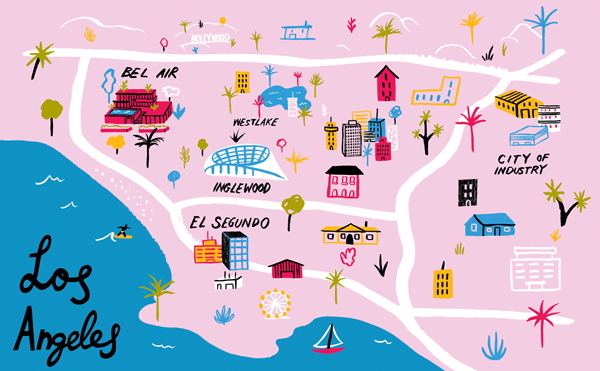
Having welcomed a wealth of investment over the last several years, Los Angeles continues to enjoy a development boom, with investors sniffing out every corner of the county in search of the next big opportunity.
Using data from the Los Angeles County property appraiser, The Real Deal analyzed historical residential and commercial property values to find out which enclaves have seen the steepest recent growth relative to how fast property values had increased in each area over a longer period. That heightened growth rate signals that investments and sales are picking up fast. To determine which neighborhoods made the cut, TRD looked at the average growth rate in assessed property values between 2011 and 2017 as compared to the jump between 2016 and 2017. The 2017 numbers, published in the summer of 2018, are the most recent assessments available.
While perennially attractive areas like Beverly Hills and Downtown L.A. still garner big trades and developments, the analysis found that those areas have plateaued in terms of the rate of growth. The neighborhoods that have seen the biggest increases exemplify how diverse the demand is in L.A. County, since each area’s evolution was driven by a different kind of development, whether sprawling industrial space, surging office space or, as is the case in Bel Air, a proliferation of ultraluxury spec homes. The following is a look at what each of these areas has cooking, ranked according to the acceleration in growth between 2016 and 2017 versus the seven-year average.
1. City of Industry
True to its name, the 12-SQUARE-mile City of Industry along Route 60 is zoned almost completely for industrial use. It has become a major hub for logistics and manufacturing firms. The municipality is home to thousands of businesses and jobs, but fewer than 300 residents.
TRD’s analysis shows Industry’s total property value in 2011 was $5.6 billion. From 2011 to 2017, property value grew in the area at an average rate of 5.4 percent, but from 2016 to 2017, the rate of growth spiked, with property values growing nearly 13 percent over one year. In 2017, the area’s total property value was $7.6 billion.
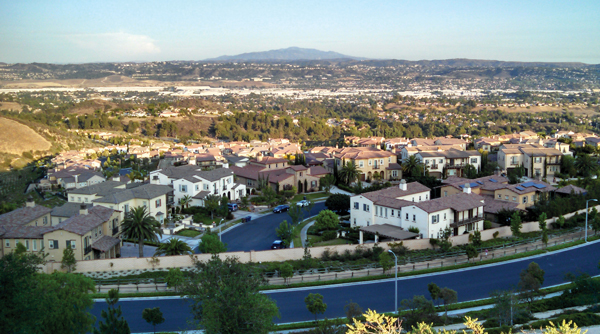
City of Industry
The vacancy rate for industrial space in the San Gabriel Valley was 2.1 percent in the second quarter of 2018, according to a JLL report. That has driven up sales prices for some of the older sites on the market. Last year was the first year that rent growth for industrial space outpaced all other commercial sectors in the city, according to real estate platform Ten-X.
Asking prices in the City of Industry shot up over the last year to $215 per square foot from $130 per square foot, according to a report this year from Lee & Associates. That’s thanks in part to increased demand for cloud computing data centers, the growing cannabis industry and the shift toward e-commerce.
In October, Port Logistics Group renewed three leases for almost 1.5 million square feet for five more years in the city.
New developers are also still making their way into Industry. In July, Dedeaux Properties sold its newly built industrial business park to a group of local owner-users for $50 million. In May, a 5.4-acre industrial development site sold for $20.5 million to food wholesaler and distributor Sun Hing Foods. The company plans to develop a new warehouse and office property and move its operations there.
As evidence of the rising land values, the Charles Dunn Company in February sold the 300,000-square-foot Peck Center complex for $51 million after holding it for nearly 20 years. Charles Dunn purchased the Center for $3.2 million in 2001.
2. Westlake
In contrast to other neighborhoods in the top five, Westlake is one of the hottest residential spots in the country, but for high-priced trades of multifamily complexes.
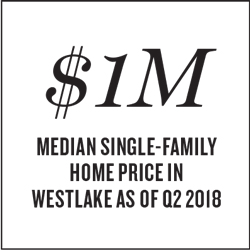 The wedge-shaped neighborhood — sandwiched between Koreatown, Echo Park and Downtown — has seen a steady influx of investment in residential development over the past few years. The total assessed value there was $4.6 billion in 2011. Values grew at an average of 6.6 percent from that year to 2017, but from 2016 to 2017 they increased 12 percent to a total neighborhood valuation of $6.7 billion, according to TRD’s analysis.
The wedge-shaped neighborhood — sandwiched between Koreatown, Echo Park and Downtown — has seen a steady influx of investment in residential development over the past few years. The total assessed value there was $4.6 billion in 2011. Values grew at an average of 6.6 percent from that year to 2017, but from 2016 to 2017 they increased 12 percent to a total neighborhood valuation of $6.7 billion, according to TRD’s analysis.
Thanks to the city’s Transit Oriented Communities program — which offers density bonuses for buildings with affordable housing that are located within a half-mile of a public transportation stop — developers have been very interested in building big multifamily projects.
For example, in October, Lifan Group won approval from the Department of City Planning for a 306-unit, 29-story apartment project with a 35 percent density bonus. And in September, Woodland Hills-based firm, USAHomes proposed as part of the program a six-story structure less than a mile from the Westlake/MacArthur Park station.
Further, Jamison Properties, which has dominated Koreatown with residential conversion projects, has recently planned developments in Westlake, along with PacTen Partners and other firms.
Other recent big deals include LaSalle Investment Management’s sale of a four-story, 204-unit multifamily property for $88.3 million in June, or around $433,000 per unit. In March, the city approved what will be one of the tallest projects in the neighborhood — a mixed-use development called the Lake on Wilshire with a 41-story apartment tower and an 850-seat theater, a block from the Westlake/MacArthur Park subway station.
In August, TRD reported that the area around MacArthur Park in Westlake saw big jumps in home prices. The median price of a home jumped from $640,000 in 2015 to almost $1 million as of the second quarter of 2018, according to Realtor.com.
3. El Segundo
Almost 30 years since Q-Tip left his wallet in El Segundo with A Tribe Called Quest, the city is seeing waves of developers do the same thing.
El Segundo is gaining a reputation as a low-cost alternative for corporate relocations. And with its 40 percent corporate tax break and commercial rents 30 percent lower than in neighboring cities, it has become the third-hottest spot in the county in terms of fastest-increasing growth rates. From 2011 to 2017, property values grew at an average of about 6 percent, but from 2016 to 2017, the rate of growth was 11 percent. The most recent total assessed value for the area stands at $8.25 billion.
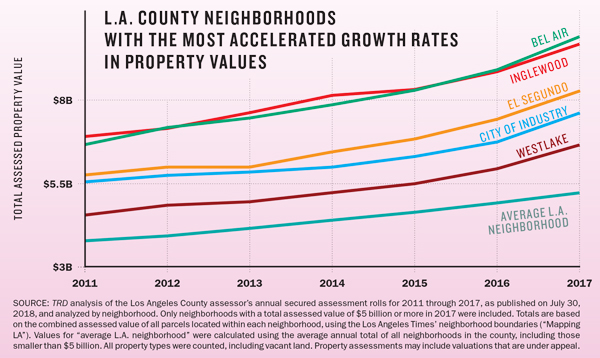
El Segundo has long been home to both industrial and traditional office real estate for aerospace and defense manufacturing, and it had four deals that made TRD’s summer 2018 ranking of the 20 most expensive office sales in the county, including the $605.5 million sale of the Pacific Corporate Towers to Starwood Capital Group.
At the start of the year, rent for office space in El Segundo was less than $3.34 per square foot, whereas in Santa Monica and Beverly Hills, rents were over $5.30 a square foot, according to a report by Colliers International. Thus, many tech and creative companies began moving into the relatively cheap and abundant industrial and office space in El Segundo.
But city officials also made major moves in the hopes of attracting younger, tech-focused crowds, as El Segundo has become a hub for the e-sports industry. In April, the city unveiled a proposal to make 120 acres of its industrial Smoky Hollow neighborhood more welcoming to creative office tenants and tech businesses. The Smoky Hollow Specific Plan allows for development of nearly 3 million square feet of office, industrial and public building space through 2040.
The office space sold to Starwood Capital Group fetched the second-highest price in the county over the 12 months ending in May. Other big trades included Swift Realty Partners’ $167 million purchase of a 550,000-square-foot office complex at 2200-2230 East Imperial Highway in May.
The Los Angeles Times’ owner, billionaire Patrick Soon-Shiong, announced in September that he plans 100,000 square feet of multimedia and e-sports space next to the newspaper’s new 145,000-square-foot headquarters in El Segundo, where he owns 11 buildings.
But the city’s exponential growth is not without controversy. El Segundo is facing a housing shortage due to a lack of residential zoning, and tensions are high among residents who disagree on the direction of development in the city of 16,500 people. Only 20 percent of the city is zoned for residential development, and there are just 7,400 housing units there.
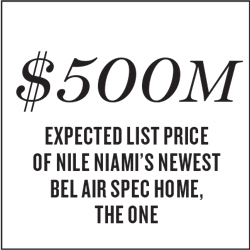 In April, DR Horton announced plans to build 58 homes at 540 East Imperial Highway, spread across two developments called Pacific Landing and Waypointe. TRD reported that Waypointe alone adds almost 0.8 percent to the city’s housing stock.
In April, DR Horton announced plans to build 58 homes at 540 East Imperial Highway, spread across two developments called Pacific Landing and Waypointe. TRD reported that Waypointe alone adds almost 0.8 percent to the city’s housing stock.
4. Bel Air
Bel Air’s opulent spec homes and their astronomical prices are largely responsible for the neighborhood’s speedy increase in value. Massive eight- to nine-figure deals for single-family homes continue to make it one of the hottest markets for the very rich and famous.
In 2011, the total assessed property value in Bel Air was about $6.7 billion, according to TRD’s research. From 2011 to 2017, property values grew at an average rate of 6.8 percent. From 2016 to 2017, property values grew about 11 percent. The most recent total assessed value of property in area is $9.9 billion.
The latest example of the eye-popping price tags is the new megamansion that’s been nicknamed “the One.” Announced in the spring, developer Nile Niami’s $500 million Bel Air spec home stands to set a precedent in decadence. At 100,000 square feet, it will be his biggest spec house yet when it hits the market near the end of the year. The property features 20 bedrooms, a 40-seat movie theater, a bowling alley, four infinity pools (including an infinity moat) and a room with walls and ceiling made out of jellyfish tanks.
Neighboring Bel Air spec mansions were dueling for priciest home listings over the summer for at least $180 million each. In July, Dr. Raj Kanodia, a celebrity plastic surgeon turned home developer, listed his 34,000-square-foot spec home for $180 million, right next door to Bruce Makowsky’s $188 million spec estate, which was announced in April and features a moat-like canal, a Louis Vuitton-designed bowling alley, a dozen bedrooms, 21 bathrooms, five bars, two champagne rooms and a theater.
A sale of either home for anywhere near the asking price would beat the record for the most expensive sale in the United States, which was set by hedge fund manager Barry Rosenstein when he bought a Hamptons estate for $137 million in 2014.
Until July, when a plot of land named the Mountain of Beverly Hills was listed for $1 billion, the most expensive listing in the country was the 10-acre Bel Air estate tied to the late chair of Univision, Jerrold Perenchio. Perenchio bought the 1933 Chartwell estate in 1986 and expanded it over his 30 years there. It was listed in 2017 for $350 million.
Among the most expensive listings in Bel Air in October was a 19,000-square-foot spec home under construction from Elite Investment Management, asking $88 million. At the beginning of the month, Niami listed a different Bel Air spec mansion for $65 million.
Other deals that continue to propel Bel Air’s value include the $56 million sales of a manse called Le Belvedere in May, and tech CEO Hideki Tomita’s $85 million purchase of a modernist compound in April.
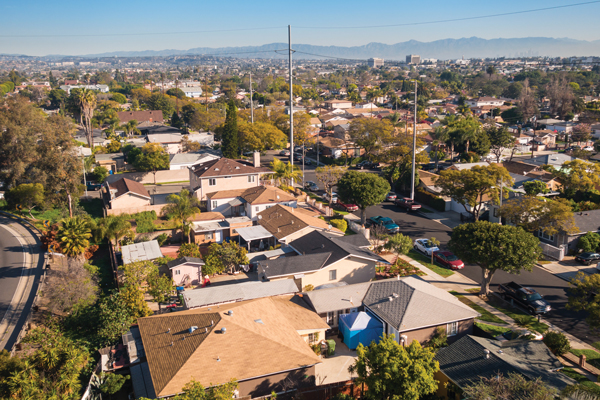
Ingelwood
5. Inglewood
Inglewood is more than ready for some football. But the new $4 billion NFL stadium for the Los Angeles Rams and Chargers, developed by billionaire Rams owner Stan Kroenke and Stockbridge Capital Group, is still more than a year away from hosting over 70,000 fans each Sunday. Nonetheless, the business community of Inglewood has been doing everything it can to take advantage of the impending influx of visitors and investment.
According to TRD’s analysis, from 2011 to 2017, property values in the area grew an average of nearly 6 percent each year, but from 2016 to 2017, total assessed property values in Inglewood jumped 10 percent. The most recent assessed property value for the neighborhood was $9.7 billion.
The 60-acre football stadium is expected to be the centerpiece of a 298-acre sports and entertainment district. It will include a casino, 900,000 square feet of retail space, 800,000 square feet of office space and 2,500 residential units.
Real estate investment in the neighborhood has accelerated considerably since the stadium was announced in 2015, with headline-grabbing acquisitions including Izek Shomof’s $18 million purchase of a drab hotel and Harridge Development Group’s $36 million buy of 18 acres for a 228-unit condo development.
There may be no better illustration of the neighborhood’s rising value than Bell Partners’ $123 million purchase of a 264-unit apartment complex near Los Angeles Stadium at Hollywood Park this year. Compare that sale price to a transaction for the property in 2014, when Fairfield Residential bought it for $15 million, before the stadium was approved to be built.
Last year, the city announced its transit-oriented development (TOD) plans near the Green Line Metro station and Crenshaw/LAX station, set to open next year. The first project announced, named the Crenshaw/Imperial Transit Oriented Development Plan, calls for a mixed-use center consisting of midrise buildings. Multifamily residential units, office space and retail would rise in the five- to 10-story buildings. The second plan, dubbed the Westchester/Veterans TOD Plan, would incorporate the existing industrial facilities near the new Crenshaw/LAX light rail and offer live/work apartments, hostels and breweries.
This year, Kruger Development unveiled plans for a Hilton-branded hotel in Inglewood. The 120-key, six-story Hilton Tru Hotel is slated to open at 11111 South Prairie Avenue. With outdoor space and other amenities, the project would amount to about 105,400 square feet.
City leaders are also courting the Los Angeles Clippers to build an arena there, although proposed deals have already drawn lawsuits from the Madison Square Garden Company and local groups.
Renowned architect Frank Gehry is also helping draw people to the neighborhood with his plan to transform an 18,000-square-foot former bank into a permanent home for the L.A. Philharmonic’s youth orchestra at La Brea Avenue and Manchester Boulevard. Construction is slated to start in the spring.




